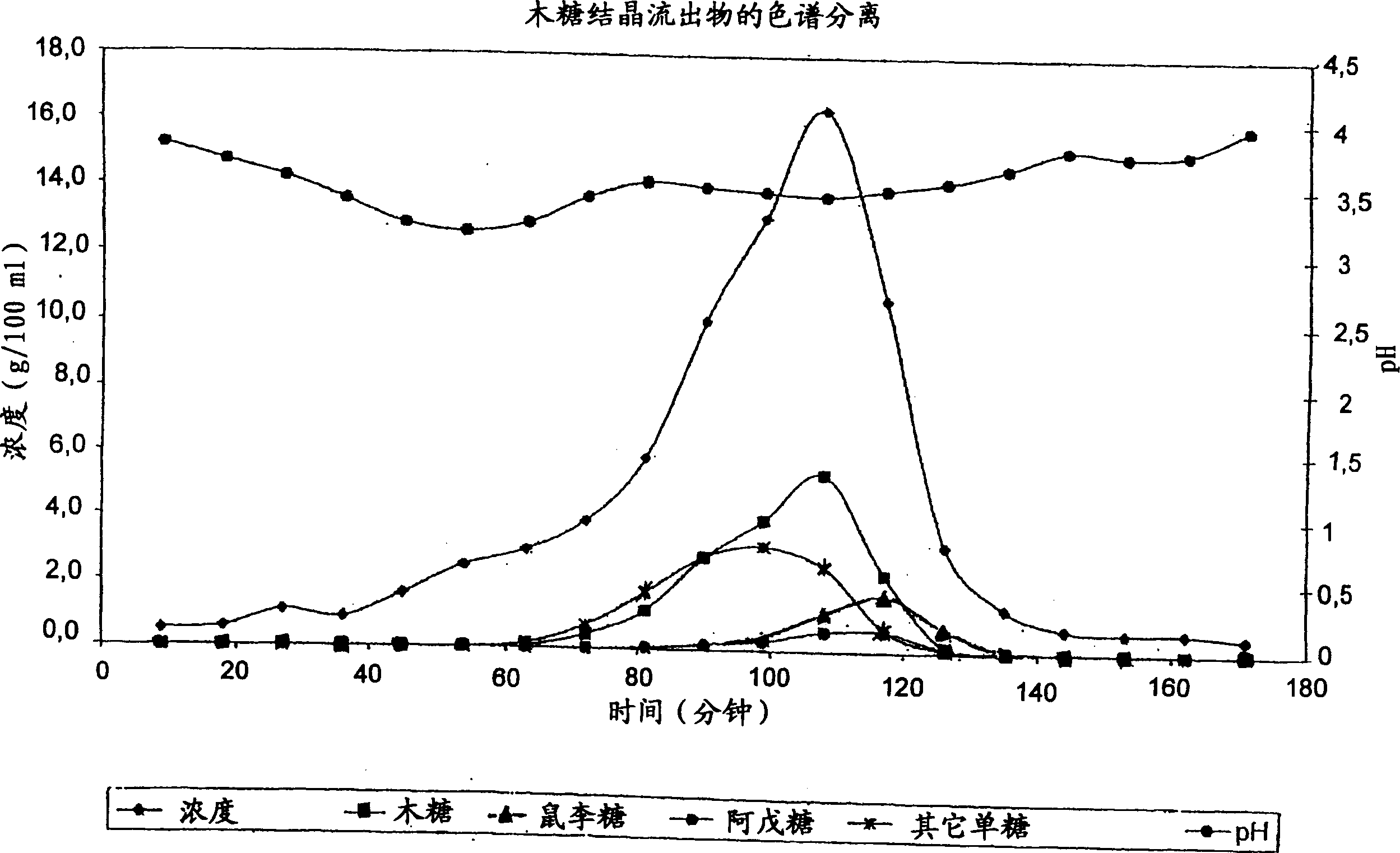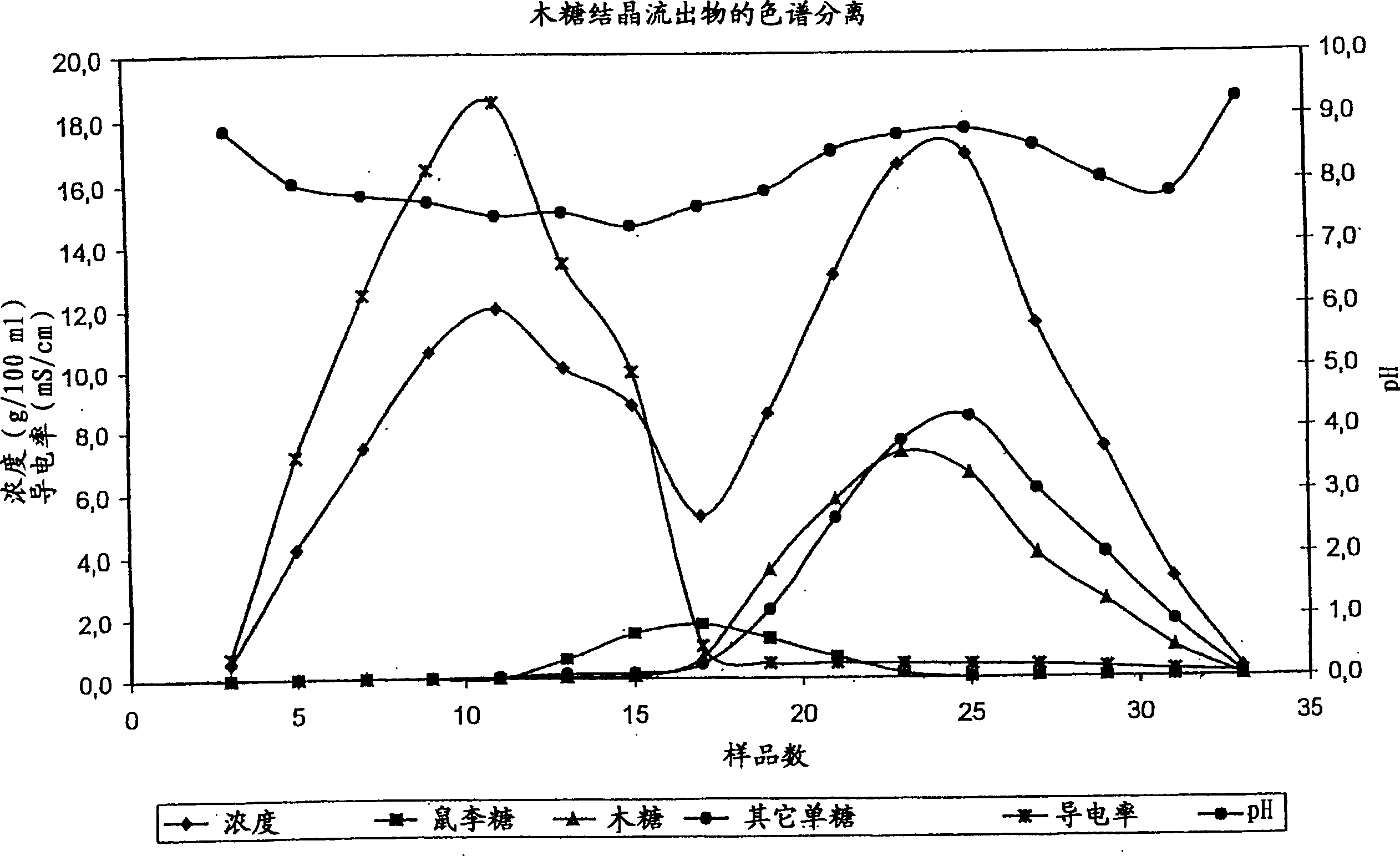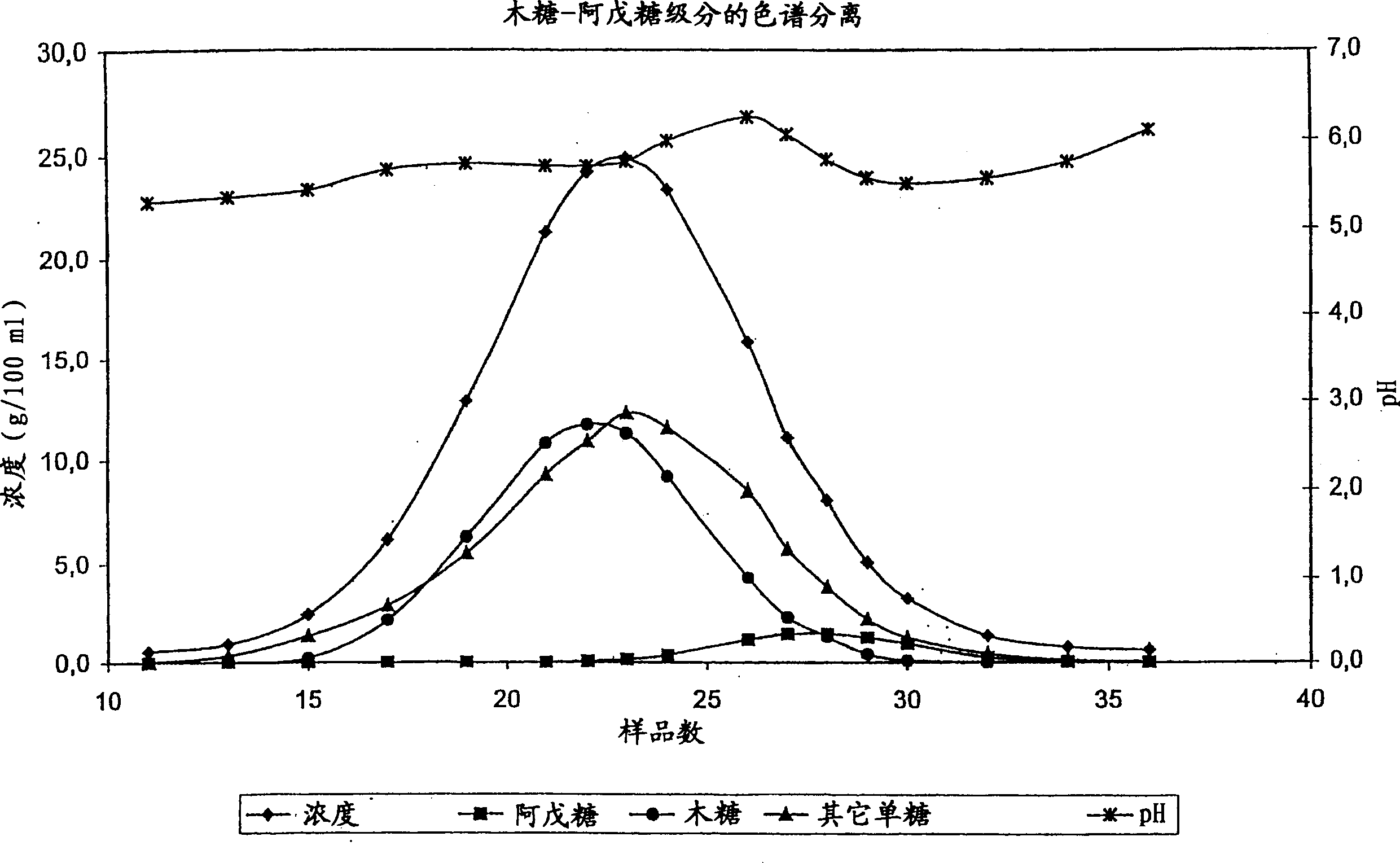Method for recovering monosaccharide from solution using weakly acid cation exchange resin for chromatographic separation
A weak acid cation and cation exchange technology, which is applied to the application of weak acid cation exchange resins in multi-step processes in chromatographic columns, can solve the problem of low hydrophilicity, weak acid cation exchange resins are not recommended, and xylose and xylose cannot be fully separated. Xylonic acid and other issues
- Summary
- Abstract
- Description
- Claims
- Application Information
AI Technical Summary
Problems solved by technology
Method used
Image
Examples
Embodiment 1
[0045] with H + / Mg 2+ Form resin chromatographic separation of xylose crystallization effluent
[0046] The xylose crystallization effluent (a beechwood-based Mg-based si-cooking liquor) was subjected to chromatography. The separation is carried out in a batch process in a laboratory chromatographic column. The column with a diameter of 0.045m is made of acrylic weak acid cation exchange resin (Finex CA 12 GC) manufactured by Finex Oy (Finland). TM )filling. The resin is an ethyl acrylate based resin. The height of the resin bed is about 0.70 m. The degree of crosslinking of the resin was 6% by weight DVB, and the average particle size of the resin was 0.26 mm. Regenerate the resin to the main H + Form (94% equivalent) and part of Mg 2+ form (6% equiv), and place the feeder on top of the resin bed. The temperature of the column and feed solution and elution water was about 65°C. The flow rate in the column was adjusted to 4ml / min.
[0047] Chromatographic separatio...
Embodiment 2
[0058] L-rhamnose was purified by chromatographic separation.
[0059] Xylose precipitate crystallization (last effluent) mother liquor from si-digestion of birch wood base was used as starting material and chromatographed in a batch separation column.
[0060] The separation is carried out in a batch process in a pilot chromatographic separation column. The whole device is composed of a raw material tank, a raw material pump, a heat exchanger, a chromatographic separation column, a product container, a feed solution, and an input pipeline for eluting water, an outflow pipeline and a flow control device.
[0061] A column with a diameter of 0.225 m was packed with an acrylic weak acid cation exchange resin (manufactured by Finex Ltd, Finland); the height of the resin bed was about 5.2 m. The degree of crosslinking of the resin was 3% by weight DVB, and the average particle size of the resin was 0.34 mm. Regenerate the resin into sodium (Na + ) form, and place the feeding de...
Embodiment 3
[0078] Chromatographic separation of the xylose-pentose arabinose fraction from the separation of rhamnose
[0079] The pentose-containing xylose fraction from rhamnose separation prepared as in Example 2 was subjected to chromatographic separation. Separation was carried out in a batch process in a pilot chromatographic separation column. A column with a diameter of 0.225 m was used with a strong acid cation exchange resin (Finex CS 13 GC TM , Finex Oy, made in Finland) filling. The height of the resin bed was 5.0 m. The degree of crosslinking of the resin was 5.5% by weight DVB and the average particle size of the resin was about 0.4 mm. Resin is Ca 2+ form. Place the loading device on top of the resin bed. The temperature of the column, feed solution and elution water is about 65°C. The flow rate in the column was adjusted to 30 l / h. Check filtration (through a filter bag) was performed prior to isolation.
[0080] Chromatographic separation was performed as follow...
PUM
| Property | Measurement | Unit |
|---|---|---|
| particle size | aaaaa | aaaaa |
| particle size | aaaaa | aaaaa |
| particle size | aaaaa | aaaaa |
Abstract
Description
Claims
Application Information
 Login to View More
Login to View More - R&D
- Intellectual Property
- Life Sciences
- Materials
- Tech Scout
- Unparalleled Data Quality
- Higher Quality Content
- 60% Fewer Hallucinations
Browse by: Latest US Patents, China's latest patents, Technical Efficacy Thesaurus, Application Domain, Technology Topic, Popular Technical Reports.
© 2025 PatSnap. All rights reserved.Legal|Privacy policy|Modern Slavery Act Transparency Statement|Sitemap|About US| Contact US: help@patsnap.com



